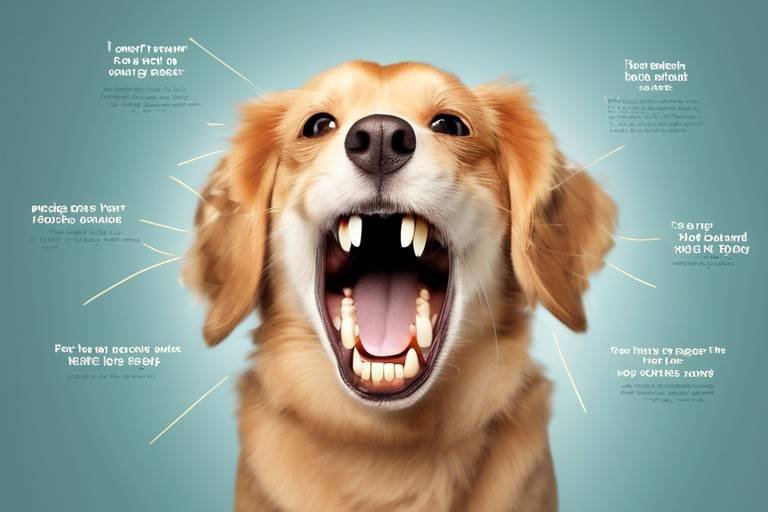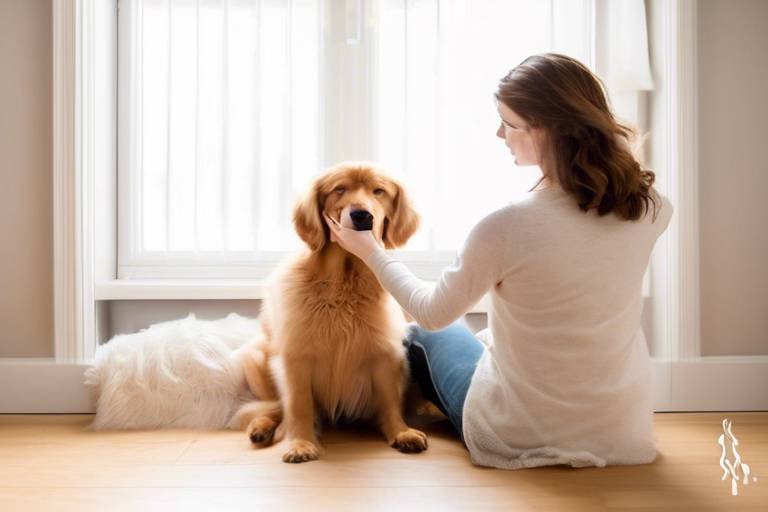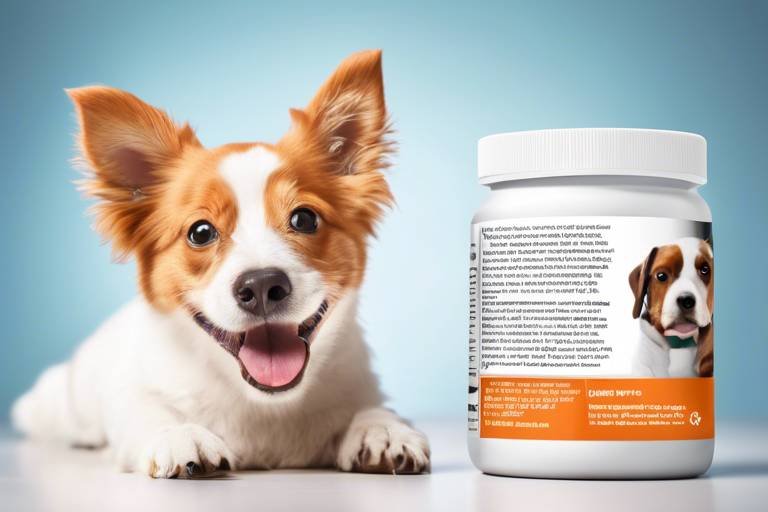How to Handle Pet Emergencies
When it comes to our furry friends, nothing is more heart-wrenching than the thought of them being in distress. Pet emergencies can happen when you least expect them, and being prepared can mean the difference between life and death. In this article, we'll dive into essential guidance on managing pet emergencies, covering everything from recognizing the signs of trouble, to administering first aid, and taking preventive measures. Let's face it, no one wants to be in a situation where their beloved pet is in danger, so arming yourself with knowledge is your best defense!
Understanding the signs of a pet emergency is crucial. Just like humans, pets can't always communicate what they're feeling, so it's up to us to be vigilant. Here are some common symptoms that indicate your pet requires immediate medical attention:
- Difficulty Breathing: If your pet is gasping for air or wheezing, it's a serious situation.
- Unresponsiveness: If your pet is lethargic, disoriented, or doesn’t respond to your calls, act fast!
- Severe Bleeding: If you notice excessive bleeding, apply pressure and seek help immediately.
- Vomiting or Diarrhea: Especially if it’s persistent, these can lead to dehydration.
- Seizures: If your pet is having a seizure, keep them safe and time it; this information is crucial for the vet.
Being able to recognize these signs can help you act swiftly when it matters most. Remember, your intuition as a pet owner is often your best guide. If something feels off, don’t hesitate to reach out to a vet!
Learning basic first aid can be invaluable in emergencies. Just like you would for a human, knowing how to stabilize your pet until professional help arrives can save lives. Here are some essential first aid techniques every pet owner should know:
- CPR: Yes, pets need CPR too! Knowing how to perform it correctly can be a lifesaver.
- Wound Care: Understanding how to clean and dress wounds properly can prevent infections.
With these skills, you can provide immediate care that can make all the difference. Let’s delve deeper into the specifics of CPR and wound care.
Administering CPR to pets can be lifesaving. Just like with humans, timing is everything. Here’s a step-by-step guide to performing CPR on dogs and cats:
Before performing CPR, it's vital to assess your pet's breathing and heartbeat. To do this, gently place your hand on your pet's chest to feel for a heartbeat. If you can’t find one, check for breathing by looking for chest movements or placing your ear near their mouth to listen for breaths. If there’s no heartbeat or breathing, it’s time to act!
Chest compressions are a key component of pet CPR. For dogs, place your hands over the heart (located just behind the elbow on the left side of the chest) and compress downwards at a rate of about 100-120 compressions per minute. For cats, use one hand to compress the chest gently but firmly. The goal is to circulate blood to vital organs until help arrives.
In case of cuts or injuries, knowing how to care for wounds is essential. The first step is to clean the wound with warm water and mild soap. Avoid using alcohol or hydrogen peroxide, as these can damage the tissue. Once cleaned, apply a sterile bandage and keep an eye on the wound for signs of infection, such as redness, swelling, or discharge.
Prevention is the best strategy for pet emergencies. By taking proactive steps, you can minimize risks and ensure your pet’s safety in everyday situations. Here are a few key measures:
Routine veterinary visits are crucial for maintaining your pet's health. Regular check-ups can help catch potential health issues early before they become emergencies. Think of it like an annual physical for your pet; it’s all about keeping them in tip-top shape!
Having an emergency kit for your pets can make a significant difference. This kit should include:
| Item | Description |
|---|---|
| First Aid Supplies | Bandages, antiseptic wipes, and gauze. |
| Emergency Contacts | List of vet contacts and animal poison control. |
| Medications | Any prescribed medications your pet may need. |
| Food and Water | Non-perishable food and bottled water. |
By preparing in advance, you can ensure that you're ready for any situation that may arise.
Q: What should I do if my pet is choking?
A: Stay calm and try to remove the object if you can see it. If not, perform back blows or abdominal thrusts, depending on the size of your pet.
Q: How can I tell if my pet is in pain?
A: Look for signs such as whimpering, hiding, or changes in appetite. If you suspect pain, consult your vet immediately.
Q: Should I attempt to treat my pet at home?
A: While basic first aid is helpful, always consult a veterinarian for serious issues. Your vet can provide the best guidance for your pet's specific needs.

Recognizing Pet Emergencies
This article provides essential guidance on managing pet emergencies, including common situations, preventive measures, and tips for effective response. Being prepared can save your pet's life in critical moments.
Understanding the signs of a pet emergency is crucial. Pets can't voice their discomfort or pain like humans can, which makes it imperative for pet owners to be vigilant and observant. One moment your furry friend is happily wagging their tail, and the next, they may be in distress. So, how do you know when it's time to act? Here are some common symptoms that indicate your pet requires immediate medical attention:
- Difficulty Breathing: If your pet is struggling to breathe, it can be a sign of a serious condition. Look for rapid breathing, wheezing, or gasping for air.
- Excessive Vomiting or Diarrhea: Occasional vomiting or diarrhea can happen, but if it becomes persistent, especially with blood in it, your pet may need urgent care.
- Severe Lethargy: If your pet seems unusually tired, unresponsive, or weak, this could indicate a serious health issue.
- Bleeding: Any bleeding, whether from the mouth, nose, or a wound, should be treated as an emergency.
- Seizures: If your pet has a seizure, it is crucial to seek immediate veterinary assistance.
- Swollen Abdomen: A bloated or swollen belly can indicate a life-threatening condition known as gastric torsion or bloat.
Recognizing these signs can be the difference between life and death for your beloved pet. It's essential to trust your instincts; if something feels off, don't hesitate to consult a veterinarian. Remember, pets can also exhibit subtle behavioral changes that may indicate distress. For example, if your usually playful dog suddenly becomes withdrawn or your cat starts hiding, these could be warning signs that something is wrong.
In addition to physical symptoms, keep an eye on your pet's behavior. Changes in appetite, drinking habits, or even their willingness to play can signal that something is amiss. Just like humans, pets can experience stress, anxiety, or pain, which can manifest in various ways. If you notice any of these changes, it's wise to take a closer look and consider reaching out to a professional.
Lastly, being prepared for emergencies also means knowing your veterinarian's contact information and having the nearest emergency animal clinic on speed dial. Familiarize yourself with the signs of distress and what to do in case of an emergency. This knowledge not only empowers you as a pet owner but also ensures that your pet receives the timely care they need.
Learning basic first aid can be invaluable in emergencies. Here, we discuss essential first aid techniques, including CPR and wound care, that every pet owner should know to stabilize their pet until professional help arrives.
Administering CPR to pets can be lifesaving. This subsection outlines step-by-step instructions for performing CPR on dogs and cats, ensuring you are prepared to act in a critical situation.
Before performing CPR, it's vital to assess your pet's breathing and heartbeat. This section explains how to check these vital signs effectively and determine if CPR is necessary.
Chest compressions are a key component of pet CPR. Here, we detail the proper technique and frequency for delivering effective compressions to your pet in distress.
In case of cuts or injuries, knowing how to care for wounds is essential. This subsection covers cleaning, dressing, and monitoring wounds to prevent infection and promote healing.
Prevention is the best strategy for pet emergencies. This section discusses proactive steps pet owners can take to minimize risks and ensure their pets' safety in everyday situations.
Routine veterinary visits are crucial for maintaining your pet's health. This subsection emphasizes the importance of regular check-ups in preventing emergencies and catching potential health issues early.
Having an emergency kit for your pets can make a significant difference. This section outlines essential items to include in your pet's emergency kit, ensuring you're ready for any situation.
1. What should I do if my pet is in an emergency?
If your pet is in an emergency, remain calm and assess the situation. Contact your veterinarian or an emergency animal clinic immediately for guidance.
2. How can I tell if my pet is in pain?
Signs of pain in pets can include vocalizations, changes in behavior, reluctance to move, or excessive grooming of a particular area.
3. Are there specific first aid courses for pet owners?
Yes, many organizations offer first aid courses specifically for pet owners. These courses can equip you with the knowledge to handle emergencies effectively.
4. How often should I take my pet for a check-up?
It's recommended to take your pet for a check-up at least once a year, but more frequent visits may be necessary for older pets or those with chronic conditions.
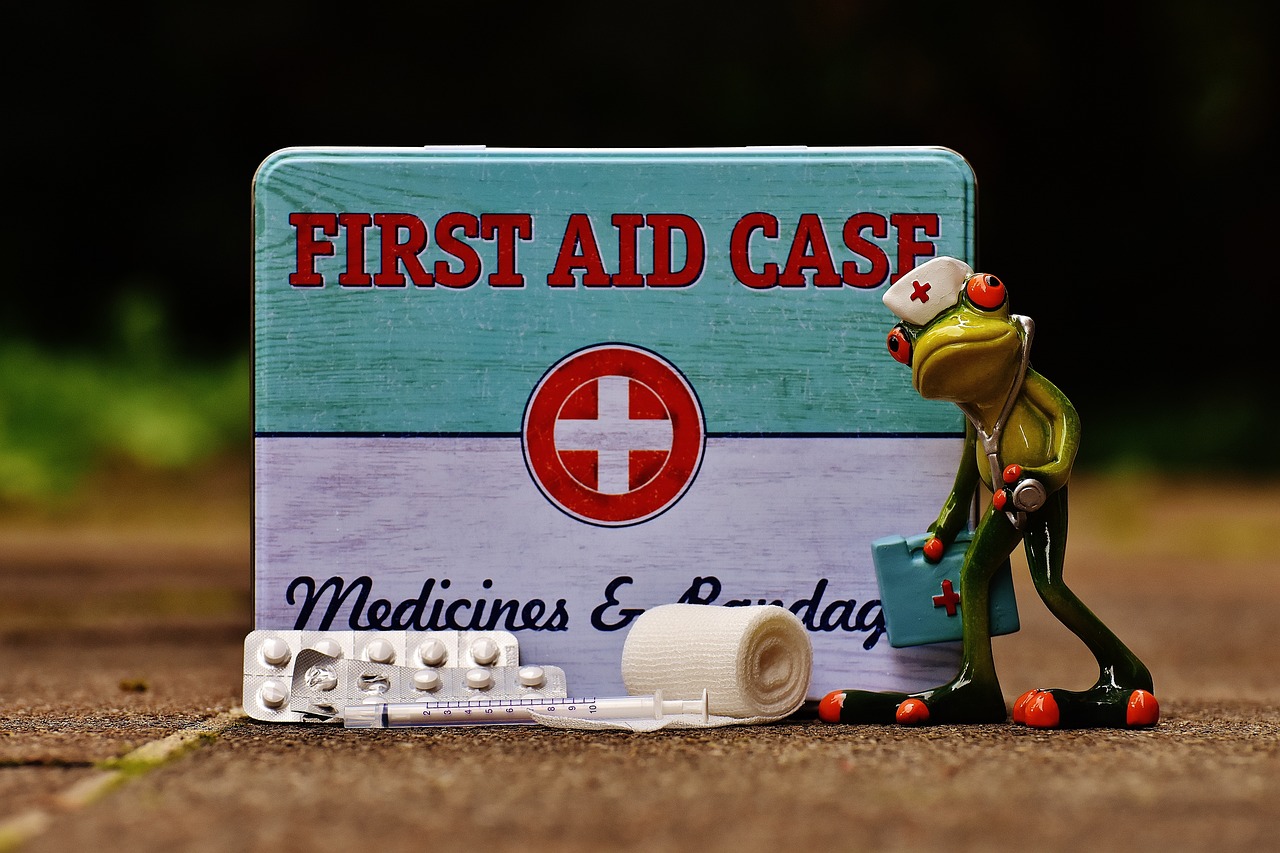
First Aid Basics for Pets
When it comes to our furry friends, knowing the basics of first aid can be a game-changer in emergencies. Imagine your beloved dog or cat suddenly collapsing or getting injured. Panic can set in, but with the right knowledge, you can be their hero. First aid for pets involves a few essential techniques that can help stabilize your pet until you can get them to a veterinarian. It's like having a lifeline in your pocket, ready to be used when the unexpected happens.
One of the most crucial aspects of first aid is understanding how to perform CPR on pets. Yes, you heard it right! Just like humans, pets can also require cardiopulmonary resuscitation. Knowing how to react in such situations can mean the difference between life and death. In addition to CPR, basic wound care is vital. Whether your pet has a small cut from playing outside or a more severe injury, being equipped with the knowledge to clean and dress wounds is essential. Think of it as being a first responder for your pet, ready to act when every second counts.
Administering CPR to pets can be lifesaving, but it’s important to understand the specific techniques that differ from human CPR. First, you need to assess the situation. Is your pet unconscious and not breathing? If so, it’s time to spring into action. Start by checking for a pulse. If there’s no pulse, you’ll need to perform chest compressions.
Before jumping into CPR, it’s crucial to assess your pet’s breathing and heartbeat. To do this, gently place your hand on their chest, just behind the front legs. You should feel a heartbeat if it’s present. For cats, you can also check the pulse on the inner thigh. If your pet isn’t breathing, you should proceed with rescue breaths. This is where your knowledge can truly shine, allowing you to act decisively.
Now, let’s talk about performing chest compressions. For dogs, place your hands over the heart area and compress firmly, about 1-2 inches deep, at a rate of 100-120 compressions per minute. For smaller pets like cats, use one hand and compress at a similar rate. Remember to allow the chest to fully recoil between compressions. It’s like giving your pet a rhythm to help them come back to life.
In the unfortunate event of cuts or injuries, knowing how to care for wounds is essential. Start by assessing the severity of the wound. If it’s bleeding, apply gentle pressure with a clean cloth or bandage. Once the bleeding has stopped, clean the wound with mild soap and water. Avoid using hydrogen peroxide, as it can damage tissue. After cleaning, apply an antibiotic ointment and cover the wound with a sterile bandage. Regularly check the wound for signs of infection, such as redness or swelling. It’s like being a guardian angel, ensuring your pet heals properly.
In summary, understanding the basics of first aid for pets can empower you to act swiftly and effectively in emergencies. Whether it’s performing CPR or caring for a wound, having this knowledge can help you keep your furry companions safe and healthy. Always remember, though, that while first aid is important, it’s no substitute for professional veterinary care. Your pet deserves the best, and being prepared is the first step in ensuring their well-being.
- What should I do if my pet is choking? - Stay calm and try to remove the object if you can see it. If not, perform the Heimlich maneuver for pets.
- How can I tell if my pet is in pain? - Look for signs like whimpering, aggression, or reluctance to move. Changes in behavior can indicate discomfort.
- When should I take my pet to the vet? - If your pet is unresponsive, has difficulty breathing, or shows severe bleeding, seek immediate veterinary care.
CPR Techniques for Pets
When it comes to our furry friends, knowing how to perform CPR can be a game-changer in a life-or-death situation. Imagine your beloved dog or cat suddenly collapsing; panic sets in, but being prepared can turn that fear into action. CPR for pets is not just a skill; it's a lifeline. Let's dive into the essential techniques you need to master to help your pet in critical moments.
First things first, before you even think about performing CPR, you need to ensure that the environment is safe for both you and your pet. If your pet has experienced a traumatic event, such as being hit by a car, there may be additional dangers present. Always approach carefully, as a frightened animal may react unpredictably. Once you’ve ensured it’s safe, it’s time to assess the situation.
To perform CPR effectively, you need to follow a series of steps. Here’s a simplified breakdown:
- Assess Responsiveness: Gently tap your pet and call their name. If they do not respond, check for breathing.
- Check Breathing: Look for chest movements, listen for breath sounds, and feel for airflow. If there’s no breathing, you need to act fast.
- Check Heartbeat: Place your hand on the left side of their chest, just behind the elbow. If you can’t feel a heartbeat, it’s time to start compressions.
Now, if you’ve confirmed that your pet is not breathing and has no heartbeat, you can begin CPR. For dogs, the technique varies slightly based on their size:
| Pet Size | Chest Compressions | Rescue Breaths |
|---|---|---|
| Small Dogs (< 30 lbs) | Use one hand to compress the chest just behind the elbow. | Close the mouth, cover the nose, and give 2 breaths every 30 compressions. |
| Medium Dogs (30-90 lbs) | Use both hands to compress the chest. | Close the mouth, cover the nose, and give 2 breaths every 30 compressions. |
| Large Dogs (> 90 lbs) | Use both hands and place them on the widest part of the chest. | Close the mouth, cover the nose, and give 2 breaths every 30 compressions. |
| Cats | Use one hand to compress the chest just behind the front legs. | Close the mouth, cover the nose, and give 2 breaths every 30 compressions. |
While performing chest compressions, aim for a rate of about 100 to 120 compressions per minute. This might sound like a lot, but just remember the rhythm of "Stayin' Alive" by the Bee Gees – it’s the perfect tempo! After every 30 compressions, give your pet two rescue breaths. Ensure that you’re sealing their mouth and covering their nose to deliver effective breaths. Keep your eyes on their chest; you should see it rise and fall with each breath.
It’s vital to keep going until help arrives or your pet starts to breathe again. Remember, the longer you can keep the blood circulating and oxygen flowing, the better the chances are for your pet's recovery. Every second counts in these situations!
In conclusion, mastering CPR techniques for pets is an invaluable skill that every pet owner should have in their toolkit. It’s not just about being prepared; it’s about being proactive in your pet's health and safety. Your quick actions could very well mean the difference between life and death for your furry companion.
Q: How do I know if my pet needs CPR?
A: If your pet is unresponsive, not breathing, or you cannot feel a heartbeat, it’s time to perform CPR.
Q: Can I perform CPR on any type of pet?
A: Yes, but techniques may vary between species. Always consult a vet for specific guidance on your pet type.
Q: Is it safe to perform CPR on my pet?
A: Yes, if done correctly. Just ensure you assess the situation to avoid injury to yourself or further distress to your pet.
Assessing Breathing and Heartbeat
When faced with a potential pet emergency, the very first step is to assess your furry friend’s breathing and heartbeat. This is crucial because it helps you determine whether immediate action is required. Just like humans, pets can experience respiratory distress or cardiac issues, and recognizing these signs can be the difference between life and death. So, how do you check for these vital signs? Let's break it down.
First, find a quiet space where you can focus on your pet without distractions. Gently place your hand on your pet’s chest or side to feel for the heartbeat. In dogs, the heartbeat can typically be felt just behind the left elbow, while in cats, it’s best checked on the left side of their chest. If you’re having trouble locating it, you can also listen closely for a heartbeat by placing your ear on their chest. A normal heart rate for dogs ranges from 60 to 140 beats per minute, depending on their size and breed, while cats generally have a heart rate between 140 and 220 beats per minute. If you notice a significant deviation from these ranges, it could indicate a serious problem.
Next, assess your pet's breathing. Observe their chest movements: is it rising and falling steadily? A normal respiratory rate for dogs is about 10 to 30 breaths per minute, while for cats, it’s typically around 20 to 30 breaths per minute. Pay attention to any signs of distress, such as:
- Rapid breathing or panting, especially if your pet is at rest.
- Labored breathing, where your pet seems to struggle to take in air.
- Blue-tinged gums, which can indicate a lack of oxygen.
- Excessive coughing or wheezing sounds.
If you observe any of these symptoms, it’s essential to act quickly. Call your veterinarian or an emergency animal clinic immediately. While waiting for help, try to keep your pet calm and comfortable. Remember, panic can exacerbate the situation. If your pet is unconscious and you cannot detect a heartbeat or breathing, you may need to perform CPR, which we’ll cover in detail later.
In summary, being able to assess your pet's breathing and heartbeat is a vital skill that can aid in providing timely assistance during emergencies. The sooner you can identify a problem, the quicker you can get your beloved pet the help they need. Stay vigilant, and always trust your instincts as a pet owner!
Here are some common questions pet owners have regarding assessing their pet's breathing and heartbeat:
- How can I tell if my pet is in distress? Look for signs such as rapid or labored breathing, unusual vocalizations, or changes in behavior.
- What should I do if I can't find my pet's heartbeat? If you cannot locate a heartbeat and your pet is unconscious, you should proceed with CPR and seek emergency veterinary care immediately.
- Is it normal for my pet's breathing rate to change during exercise? Yes, increased breathing rates during physical activity are normal. However, if your pet continues to breathe rapidly after resting, it could be a cause for concern.
Performing Chest Compressions
When your beloved pet is in distress and not breathing, can be a critical action that may save their life. It's essential to act swiftly but calmly, as panic can hinder your effectiveness. The technique for chest compressions varies slightly between dogs and cats, so knowing the right approach for your pet is vital. Here’s how to effectively perform chest compressions on your furry friend:
First, place your pet on a firm, flat surface. If they are a larger dog, you might need to position them on their side. For smaller pets, you can often perform compressions while they are lying on their back. Next, locate the correct spot for compressions by feeling for the heart. This is typically found just behind the elbow on the left side of their chest. With your hands, you will apply pressure to this area.
For dogs, you should use both hands, stacking one on top of the other, and push down firmly. The depth of the compression should be about one-third of the chest's width, and the rate should be around 100 to 120 compressions per minute. This rhythm is similar to the beat of the song "Stayin' Alive," which can help you maintain the right tempo. For smaller pets, use one hand or two fingers to compress the chest at a similar rate and depth.
It's crucial to allow the chest to fully expand between compressions to let the heart refill with blood. Remember: the goal is to circulate blood to vital organs, especially the brain and heart. If you can, alternate between 30 compressions and 2 rescue breaths, especially for larger dogs. For cats and smaller dogs, focus primarily on compressions, as their smaller size often makes rescue breaths more challenging.
As you perform these compressions, keep an eye on your pet's condition. If they start breathing again or show any signs of consciousness, stop the compressions immediately and monitor them closely until help arrives. If you are unsure about your technique or feel overwhelmed, don’t hesitate to call your veterinarian or an emergency animal clinic for guidance while you continue to provide care.
In summary, being prepared to perform chest compressions can be the difference between life and death for your pet. By practicing these techniques and knowing what to do in an emergency, you equip yourself with the power to act decisively when it matters most.
- How do I know if my pet needs CPR? Look for signs such as unresponsiveness, no breathing, or a lack of heartbeat.
- Can I perform CPR on any type of pet? While the basic principles apply, techniques may vary between species. Always consult a vet for specific guidance.
- How often should I practice pet first aid techniques? Regular practice is recommended, ideally every few months, to keep your skills fresh.
Wound Care Essentials
When your furry friend gets a cut or scrape, it can be a moment of panic. However, knowing how to properly care for wounds can make all the difference in their recovery. First and foremost, it’s essential to assess the severity of the wound. Minor cuts and abrasions can often be treated at home, while deeper lacerations or wounds that won't stop bleeding may require a trip to the vet. The key is to remain calm and act quickly.
To start, you’ll want to clean the wound gently. Use warm water and mild soap to rinse away dirt and debris. Never use hydrogen peroxide or alcohol, as these can damage the tissue and delay healing. Instead, opt for a saline solution or a specialized pet wound cleanser, which you can find at your local pet store. After cleaning, pat the area dry with a clean cloth. This step is crucial because bacteria thrive in moisture, and you want to minimize the risk of infection.
Once the wound is clean, you can apply a topical antibiotic ointment to help prevent infection. Be sure to choose a product that is safe for pets; some human ointments can be harmful to animals. After applying the ointment, cover the wound with a sterile bandage or gauze. This helps protect the area from further injury and keeps it clean. If your pet is prone to licking or biting at their wounds, consider using an Elizabethan collar (also known as a cone) to prevent them from accessing the site.
Monitoring the wound is equally important. Keep an eye on it for any signs of infection, such as increased redness, swelling, or discharge. If you notice any of these symptoms, or if the wound isn’t healing within a few days, it’s time to consult your veterinarian. They may need to prescribe antibiotics or perform additional treatments to ensure your pet's recovery.
Additionally, it’s wise to have a first aid kit specifically for your pet. This kit should include:
- Gauze pads and bandages
- Antibiotic ointment
- Saline solution for cleaning wounds
- Scissors and tweezers
- A digital thermometer
Having these supplies on hand can make it easier to manage minor injuries at home, giving you peace of mind in case of an emergency. Remember, while you can handle minor wounds, always err on the side of caution and consult your vet for anything that seems serious.
Q: How do I know if a wound requires a vet visit?
A: If the wound is deep, won't stop bleeding, or shows signs of infection like redness or pus, it's best to see a veterinarian.
Q: Can I use human antiseptics on my pet's wounds?
A: No, many human antiseptics can be harmful to pets. Stick to products specifically designed for animals.
Q: How can I prevent my pet from licking their wound?
A: An Elizabethan collar is often effective. You can also use a recovery suit designed for pets to cover the area.
Q: What should I do if my pet's wound gets worse?
A: If you notice increased swelling, pain, or discharge, contact your veterinarian immediately.
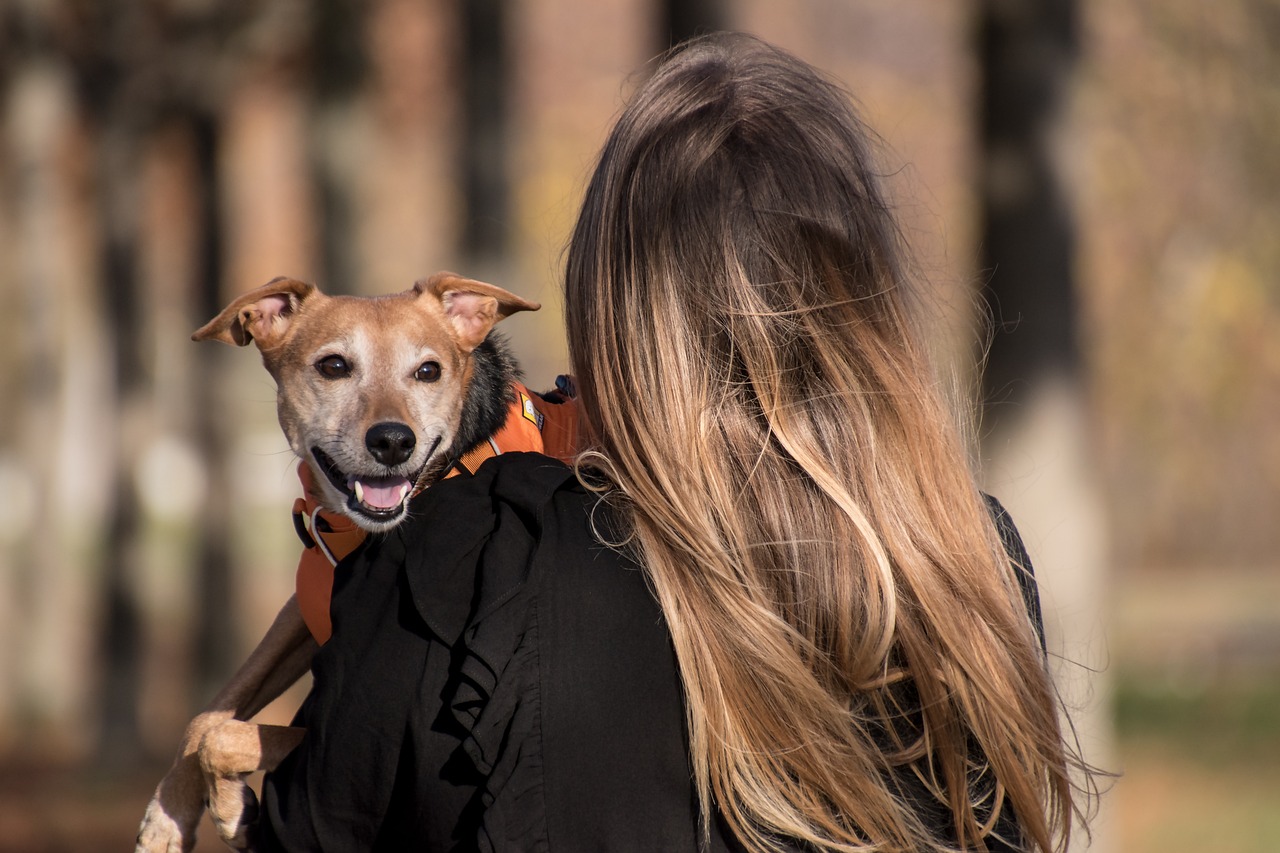
Preventive Measures for Emergencies
When it comes to our furry companions, prevention is always better than cure. Taking proactive steps can significantly reduce the likelihood of pet emergencies and ensure a safer environment for your beloved pets. Imagine a scenario where your pet is in distress, and you’re left scrambling for solutions. It’s a nightmare for any pet owner, but with the right preventive measures, you can sleep a little easier at night knowing you’ve done everything possible to keep your pet safe.
One of the most effective strategies is to schedule regular veterinary check-ups. These visits are not just for vaccinations; they allow your vet to catch potential health issues before they escalate into emergencies. Think of your vet as your pet's personal health coach, keeping track of their well-being and providing valuable advice on diet, exercise, and preventive care. A healthy pet is less likely to face sudden health crises, so make those appointments a priority!
In addition to regular vet visits, creating an emergency preparedness kit can be a lifesaver. This kit should be easily accessible and contain all the essentials you might need in case of an emergency. Here are some items you should consider including:
- First aid supplies (bandages, antiseptic wipes, etc.)
- Emergency contact numbers (vet, poison control, etc.)
- Medications your pet may need
- Food and water for at least 72 hours
- Leash and carrier for safe transport
Having these items on hand can make a world of difference when time is of the essence. You wouldn’t run a marathon without proper gear, right? Similarly, don’t wait until an emergency strikes to gather your supplies. Prepare now, and you’ll be ready for anything!
Another critical preventive measure is to pet-proof your home. Just like you would baby-proof a house for a toddler, your home should be a safe haven for your pets. This means securing loose wires, keeping hazardous substances out of reach, and ensuring that small objects that could be swallowed are stored safely. A little bit of foresight can prevent a lot of heartache.
Lastly, consider enrolling your pet in a basic obedience class. Not only does this provide your pet with essential training, but it also strengthens the bond between you and your furry friend. A well-trained pet is less likely to engage in dangerous behaviors that could lead to emergencies. Plus, it’s a fun way to socialize your pet with others!
In summary, by taking these preventive measures—regular vet check-ups, preparing an emergency kit, pet-proofing your home, and investing in obedience training—you can significantly reduce the risk of pet emergencies. Remember, being proactive is key. Your pet depends on you for their safety and well-being, so take the initiative to create a secure environment where they can thrive.
Q: What should I do if my pet has an emergency?
A: Stay calm, assess the situation, and contact your veterinarian or an emergency animal clinic immediately. If you can safely transport your pet, do so while keeping them as comfortable as possible.
Q: How often should I take my pet to the vet?
A: Generally, it's recommended to take your pet for a check-up at least once a year. However, older pets or those with health issues may need more frequent visits.
Q: What items should be in my pet's emergency kit?
A: Essential items include first aid supplies, food and water, medications, a leash, a carrier, and emergency contact numbers.
Q: How can I tell if my pet is having a medical emergency?
A: Look for signs such as difficulty breathing, excessive bleeding, seizures, or unresponsiveness. If you notice any of these symptoms, seek immediate veterinary care.
Regular Vet Check-ups
When it comes to our furry friends, regular vet check-ups are not just a good idea; they are absolutely essential! Think of it like taking your car in for a tune-up. Just as you wouldn’t wait until your engine is sputtering to check the oil, you shouldn’t wait for your pet to show signs of illness before making that important trip to the vet. Regular check-ups can help catch potential health issues before they become serious problems, ensuring your pet lives a longer, healthier life.
During these visits, your veterinarian will perform a thorough examination that includes checking your pet’s weight, heart rate, and overall condition. They may also recommend vaccinations and preventative treatments that are crucial for keeping your pet safe from diseases. For instance, diseases like rabies, parvovirus, and distemper can be prevented with timely vaccinations, which is why scheduling these check-ups is vital.
Additionally, regular vet visits allow you to discuss any behavioral changes or concerns you might have noticed at home. Did your dog start hiding more than usual? Is your cat suddenly more lethargic? These subtle changes can be indicators of underlying health issues, and your vet can provide guidance on what to do next. Remember, pets can’t tell us when something is wrong, so it’s up to us to be vigilant and proactive!
Moreover, many veterinary clinics offer wellness plans that can make regular check-ups more affordable. These plans often include a set number of visits, vaccinations, and even dental cleanings for a flat fee. This not only helps you budget for your pet’s healthcare but also ensures that you don’t skip those important visits due to cost concerns. Here’s a quick look at what a typical wellness plan might include:
| Service | Description |
|---|---|
| Annual Exam | A comprehensive health check-up to assess your pet's overall condition. |
| Vaccinations | Essential shots to protect against common diseases. |
| Dental Cleaning | Professional cleaning to maintain oral health and prevent dental issues. |
| Parasite Control | Regular treatments for fleas, ticks, and worms. |
In conclusion, regular vet check-ups are a cornerstone of responsible pet ownership. They provide peace of mind, help catch health issues early, and ultimately contribute to a happier, healthier pet. So, don’t delay! Schedule that appointment today, because your furry companion deserves the best care possible.
- How often should I take my pet to the vet? Generally, it's recommended to take your pet for a check-up at least once a year, but senior pets or those with health issues may need more frequent visits.
- What should I bring to the vet? Bring your pet’s medical records, any medications they are currently taking, and a list of any symptoms or changes in behavior you’ve noticed.
- Are vet check-ups expensive? The cost can vary depending on your location and the services provided, but many clinics offer wellness plans to help manage costs.
- What happens during a vet check-up? A vet check-up typically includes a physical examination, vaccinations, and discussions about your pet’s diet, behavior, and any concerns you may have.
Emergency Preparedness Kits
When it comes to our furry companions, being prepared for emergencies is not just smart—it's essential. Imagine a scenario where your pet suddenly falls ill or gets injured. The last thing you want to do is scramble around looking for supplies. That’s why having an Emergency Preparedness Kit specifically for your pets can be a game-changer. This kit should be easily accessible, packed with all the essentials you might need in a crisis. So, what exactly should you include in this lifesaving kit?
First and foremost, consider the basics. Your kit should include items like a leash, collar, and identification tags. These are crucial for keeping your pet secure and identifiable in stressful situations. Additionally, don’t forget to pack a sufficient supply of your pet’s medications and any medical records that might be needed during an emergency vet visit. Having these documents on hand can expedite treatment and ensure your pet gets the right care.
Next, think about the health and safety of your pet. Include first aid supplies such as bandages, antiseptic wipes, and gauze. These items can help you manage minor injuries before you can get to a vet. You might also want to add a thermometer to monitor your pet's temperature, which can be a vital sign of distress. Furthermore, don’t overlook the importance of having a pet first aid book or a guide that can provide you with quick instructions on how to handle various emergencies.
Food and water are non-negotiable when it comes to emergency preparedness. Pack a supply of your pet's regular food and a portable water bowl. You never know when you might need to stay away from home for an extended period due to an emergency. Additionally, consider including some treats to help keep your pet calm during stressful situations. It’s like having a little comfort in a bag!
Lastly, think about your pet’s comfort. Include a familiar blanket or toy in the kit. This can provide them with a sense of security amidst the chaos. Remember, pets can sense when something is wrong, and having their favorite items can help soothe their nerves.
Here’s a quick overview of what your Emergency Preparedness Kit should include:
| Item | Purpose |
|---|---|
| Leash and Collar | Keep your pet secure and identifiable |
| Medications | Ensure your pet has necessary prescriptions |
| First Aid Supplies | Manage minor injuries and stabilize your pet |
| Food and Water | Sustain your pet during emergencies |
| Comfort Items | Provide emotional support to your pet |
In summary, having an Emergency Preparedness Kit for your pet is not just about being ready for the unexpected; it's about ensuring their health and safety when it matters most. Take the time to assemble a comprehensive kit, and you can face emergencies with confidence, knowing you're equipped to handle whatever comes your way.
Q: How often should I check my emergency kit?
A: It's a good idea to review your emergency kit every six months to ensure that all items are up-to-date, especially medications and food supplies.
Q: Can I use human first aid supplies for my pets?
A: While some human first aid supplies can be used for pets, it's best to have a dedicated pet first aid kit to avoid any harmful ingredients that may be in human products.
Q: What if my pet has special needs?
A: If your pet has specific medical needs, make sure to include any specialized supplies or medications in your emergency kit.
Frequently Asked Questions
- What should I do if my pet is injured?
If your pet is injured, the first step is to stay calm. Assess the situation and determine the severity of the injury. If it’s a minor wound, you can clean it with warm water and apply a sterile bandage. However, if the injury is severe or if your pet is bleeding heavily, it’s crucial to seek veterinary care immediately. Always remember, your quick action can make a significant difference!
- How can I tell if my pet needs emergency care?
Recognizing the signs of a pet emergency is vital. Look for symptoms like difficulty breathing, excessive bleeding, seizures, or unresponsiveness. If your pet is displaying any of these signs, it’s better to err on the side of caution and take them to a vet as soon as possible. Trust your instincts—if something feels off, it probably is!
- What items should I include in my pet's emergency kit?
Your pet's emergency kit should include essential items such as a first aid manual, gauze, adhesive tape, antiseptic wipes, a muzzle, and any medications your pet may need. Don’t forget to include food and water, as well as a leash and a carrier for safe transport. Having these items ready can save precious time during an emergency!
- Can I perform CPR on my pet?
Yes, you can perform CPR on your pet, but it's crucial to know the proper technique. First, check for breathing and a heartbeat. If necessary, follow the steps for pet CPR, which include chest compressions and rescue breaths. Remember, it’s always best to get trained beforehand, so consider taking a pet first aid course!
- How often should I take my pet for a vet check-up?
Regular vet check-ups are essential for maintaining your pet’s health. Generally, it's recommended to take your pet for a check-up at least once a year. However, senior pets or those with health issues may require more frequent visits. Think of these check-ups as tune-ups for your furry friend—keeping them in top shape!
- What are some common pet emergencies I should be aware of?
Common pet emergencies include poison ingestion, severe allergic reactions, broken bones, and heatstroke. Being aware of these situations can help you react quickly. Always keep emergency contact information for your vet handy, and don’t hesitate to call if you have concerns!













